Cross unveils smaller beet washer
Among the Irish exhibitors at Cereals was Cross, which unveiled its Moose beet washer to the UK market. Not only is there a market here among stock farmers for livestock feed root washing, but the firm’s Simon Cross says there is an increasing number of UK tillage farmers seeking alternative crops to spread rotations and growing beet for use in anaerobic digesters. Designed as a lower-cost fixed version of the existing Rhino and Elephant models, it does away with a scraper floor, and features a destoner and auger underneath the wash cylinder to remove sludge and stones, which are then transferred to an elevator. Cost is reckoned to be two-thirds of the Rhino’s for the same output.
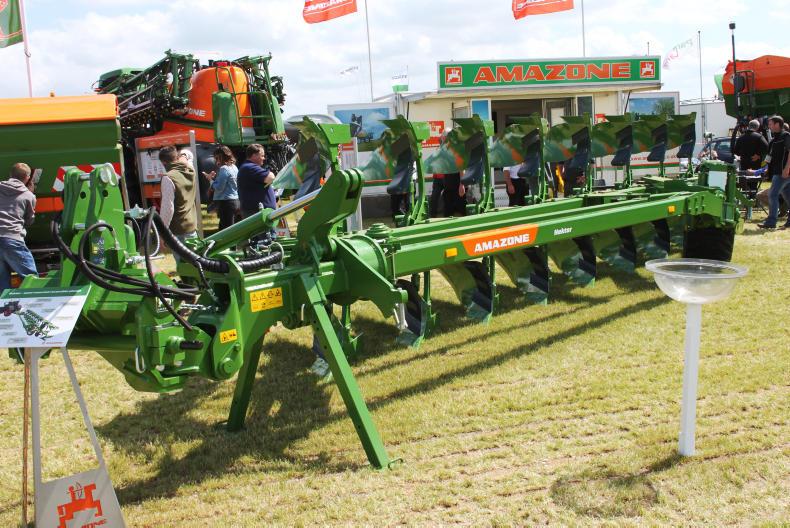
Amazone’s six-eight furrow Hektor includes a new pivot system connecting headstock and beam.
Despite the move towards minimum tillage systems – and, in some cases, direct drilling – the UK plough market continues to hold steady as some use weed seed burial as a min- or no-till ‘reset button’, and others plough to repair damaged soil surfaces or work land where roots, vegetables and other non-combinables are in the rotation.
Figures suggest the market has fluctuated steadily in recent years between approximately 750 and 850 units/year, and, although larger models grab the limelight, the bulk of sales remain centred around four- and five-furrow units.
But there were some much larger and more numerously-bodied models on show at Cereals, among them Amazone’s Hektor. Marking the German firm’s entry into the semi-mounted market, it is available in six-, seven- and eight-furrow versions, with six-plus-one and seven-plus-one options, and is said to be suited to use with tractors up to 350hp.
Amazone says simplicity of operation and robustness have been the key criteria behind the plough’s design, which is an evolution of engineering by Vogel and Noot, whose plough business the firm purchased alongside the development of Amazone’s own Cayros and Cayron ploughs. With the latter attribute in mind, the 150mm x 150mm beam is constructed from 12mm thick steel, while to meet the requirements of the former there is manual furrow width adjustment which works in steps from 36cm to 48cm per body.
The ability to cope with high trash levels is said to be aided by point-to-point clearance of 100cm and an 82cm beam height.
The plough is available with the complete range of Amazone bodies, including the firm’s new WX400 PE plastic option, and comes as either the standard Hektor, with shearbolt overload protection or, on six- and seven-furrow models only, as the Hektor S, which features hydraulic auto reset, with accumulator pressure that can be set from the tractor seat either individually or centrally.
The design includes a new pivot system connecting headstock and beam, which aids accurate tracking behind the tractor and produces the optimum pull-line.
Front furrow adjustment is hydraulic to enable the plough to be easily matched to the internal track width of the tractor wheels.
The design also features turnover cylinders with hydraulic stop position damping to control drop speed and cushion the plough when reversing the bodies, reducing shock loads on both plough and tractor.
Fendt tracked tractors and sprayers
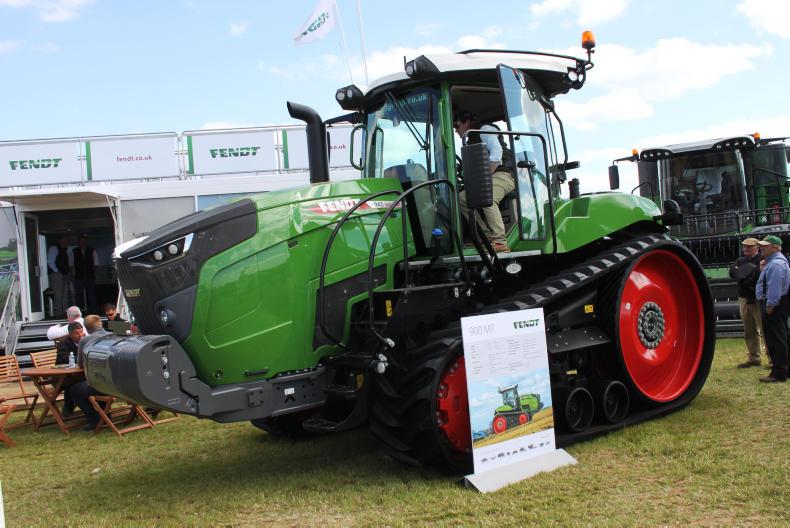
Fendt gave a Cereals debut to its CVT-equipped 700MT crawlers of up to 431hp.
Many visitors to January’s LAMMA show had seen them there, and those who attended Agritechnica in November had witnessed their launch, but Fendt’s new crawler and sprayer ranges were making their Cereals debut. While the trailed and self-propelled sprayer ranges and the large crawlers remain largely unchanged from the former Challenger models, the ‘small’ tracklayers are very different beasts. Now based largely on Fendt tractor components – and made in Germany at the Hohenmolsen plant that also manufactures the Fendt Katana forage harvester – the biggest change to the way in which the machines are operated is in the transmission department. Here, as would be expected of a Fendt-branded tractor, lies the Vario CVT, marking the first time such a box has been used in a twin-track crawler.
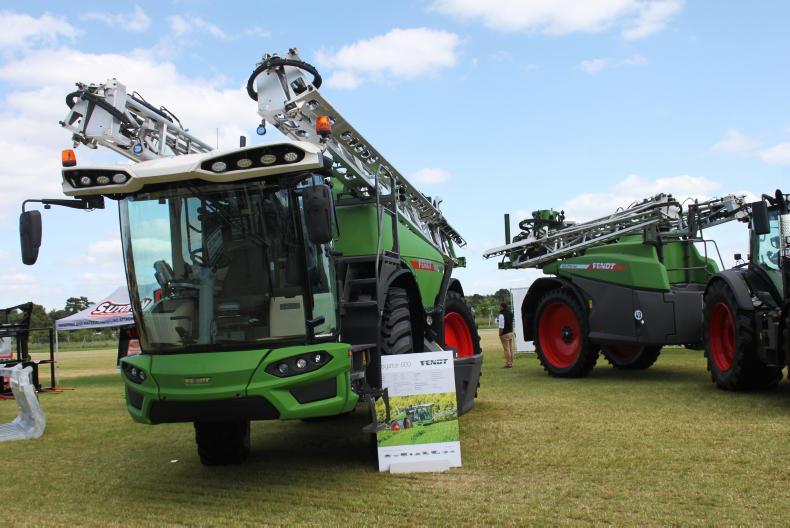
The Fendt sprayer range, meanwhile, is essentially a re-liveried version of that previously offered in Challenger yellow, but production of the machines – both trailed and self-propelled – has also moved to Germany, in this case from the Netherlands.
Kongskilde still here – with a new body
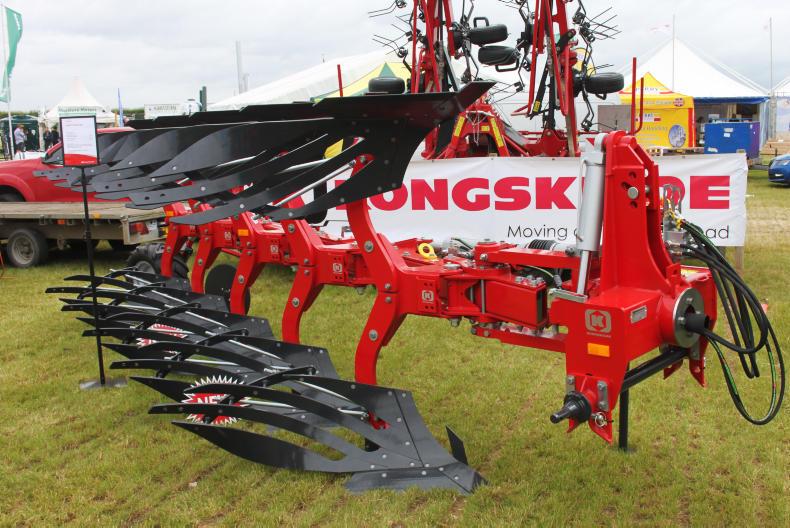
Kongskilde products continue to be offered independently, despite the CNHi takeover.
Despite Kongskilde selling its farm implement lines to the New Holland business unit of CNH Industrial in order to focus on its grain drying and storage equipment, red-liveried Kongskilde-branded machinery is still available through the brand’s dealers, and at Cereals this included a new slatted body aimed at farms on sticky organic or clay soils, or seeking a more broken furrow profile on tougher clay soils. The XSD slatted body is based on the profile of the established XLD conventional type, and incorporates a patented helical design to improve furrow turning and fully bury residue. Suited to ploughing from 12-30cm deep at a working width of 35-55cm, it is designed for use with tractors on tyres up to 710mm wide.
Väderstad disc does more for residue
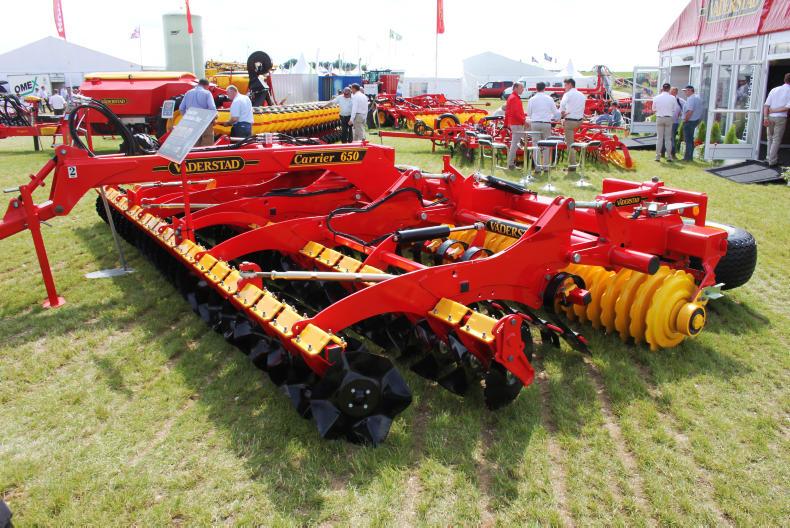
Väderstad’s CrossCutter disc has been designed for use especially in oilseed rape stubbles and cover crops.
Among the new cultivation equipment on display at Cereals, while many items were designed for min-till situations, others were said to suit the flexibility required by those seeking versatility in their systems. These included a number of new stubble processors on display from firms suggesting usage ahead of either no- or min-till drilling, or where full burial of trash, regrown stubbles or cover crops need a helping hand ahead of the plough.
Now available for 3.0-12.25m models of its Carrier disc cultivator, Väderstad’s CrossCutter disc has been designed for use especially in oilseed rape stubbles and cover crops, says the firm, but is also likely to find favour among those looking to tackle cereal stubble regrowth and ploughed land, depending on soil type and desired results.
Working at around 30mm, the wavy profile is designed to provide intensive mixing and surface compaction removal for a relatively low horsepower input at speeds of up to 20km/hr. To ensure evenness of working depth across the implement regardless of width, each disc is individually mounted to its own rubber suspended disc arm to aid contour-following.
The 450mm-diameter discs are produced in-house by a Väderstad subsidiary, and are said to be suited to working on ploughed land as well as at 2-3cm directly onto stubbles or cover crops. They are now an option for Carrier 300-400, Carrier 420-820 and Carrier 925-1225 models.
Horsch cultivator can be configured
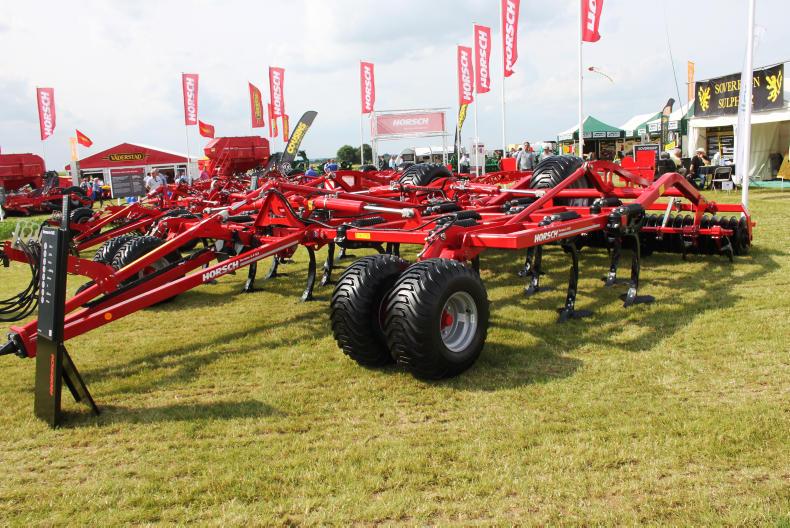
The trailed Horscsh Terrano GX can be had in three- or four-row configurations, with tine spacing of 28.5cm to 31.5cm.
Horsch gave a Cereals debut to the trailed three- or four-row GX version of its Terrano, which complements the FX, MT and FM models. Available in 4.0-6.0m working widths, it can be specified with either a three- or four-row configuration, and tine spacing of 28.5cm to 31.5cm. Fitted with the firm’s third-generation TerraGrip tines, frame-located springs have a 550kg release force and maintenance-free pivot points.
With four cultivation point options, the GX is said to be configurable for a number of possible soil types and scenarios, from loosening compaction to intensive mixing of trash and soil.
There is a range of different single and double packer options.
Also from Horsch were new 5m and 6m Cruiser XL trailed cultivators, fitting between the existing smaller mounted models and the 10m/12m trailed versions. The six-row design and 700mm frame height are designed for situations where thorough mixing of large amounts of trash is required, and a range of single and double packer types is available.
Four different point types means it can be used for stubble cultivation and straw distribution after combining, seedbed preparation, as a fine cultivator for mechanical weed control or for loosening and aerating soils in spring.
The Sola Ares drills incorporate a pressurised 1,800-litre hopper, and can be ordered as a solo drill or in a piggyback configuration for cultivator or power harrow mounting.
UK firm KRM continues to find a strong market for the relatively simple tine drills it imports into the UK from Spanish firm Sola, and at Cereals launched its latest contender, the Ares. Featuring a pressurised 1,800-litre hopper, it can be ordered as a solo drill or in a piggyback configuration for cultivator or power harrow mounting, depending on tillage system. The 4.0-6.0m Ares design improvements include external pipework for easier cleaning, Isobus-controlled electric drive metering, and either tine or double disc coulters.
First singulation drill for combinables
A forward speed of 10-12km/h is recommended to maintain performance, with a new single grain metering unit sowing two grains each second resulting, equating at 12km/h to a seed density of 240 grains/sq m where a row spacing of 15cm is used.
Inside the metering unit the seed flow follows a circular path where the grains increase in speed and move to the outer part of the metering disc. One is then selected for the fall tube, with the others transported back to the starting point. The operator only has to enter the desired grains/sq m, thousand grain weight and germination level, the system then calculates the metering quantity.
Read more
Vintage: classic Case in action with modern fleet
Highlights from a revamped Cereals 2018
Cross unveils smaller beet washer
Among the Irish exhibitors at Cereals was Cross, which unveiled its Moose beet washer to the UK market. Not only is there a market here among stock farmers for livestock feed root washing, but the firm’s Simon Cross says there is an increasing number of UK tillage farmers seeking alternative crops to spread rotations and growing beet for use in anaerobic digesters. Designed as a lower-cost fixed version of the existing Rhino and Elephant models, it does away with a scraper floor, and features a destoner and auger underneath the wash cylinder to remove sludge and stones, which are then transferred to an elevator. Cost is reckoned to be two-thirds of the Rhino’s for the same output.

Amazone’s six-eight furrow Hektor includes a new pivot system connecting headstock and beam.
Despite the move towards minimum tillage systems – and, in some cases, direct drilling – the UK plough market continues to hold steady as some use weed seed burial as a min- or no-till ‘reset button’, and others plough to repair damaged soil surfaces or work land where roots, vegetables and other non-combinables are in the rotation.
Figures suggest the market has fluctuated steadily in recent years between approximately 750 and 850 units/year, and, although larger models grab the limelight, the bulk of sales remain centred around four- and five-furrow units.
But there were some much larger and more numerously-bodied models on show at Cereals, among them Amazone’s Hektor. Marking the German firm’s entry into the semi-mounted market, it is available in six-, seven- and eight-furrow versions, with six-plus-one and seven-plus-one options, and is said to be suited to use with tractors up to 350hp.
Amazone says simplicity of operation and robustness have been the key criteria behind the plough’s design, which is an evolution of engineering by Vogel and Noot, whose plough business the firm purchased alongside the development of Amazone’s own Cayros and Cayron ploughs. With the latter attribute in mind, the 150mm x 150mm beam is constructed from 12mm thick steel, while to meet the requirements of the former there is manual furrow width adjustment which works in steps from 36cm to 48cm per body.
The ability to cope with high trash levels is said to be aided by point-to-point clearance of 100cm and an 82cm beam height.
The plough is available with the complete range of Amazone bodies, including the firm’s new WX400 PE plastic option, and comes as either the standard Hektor, with shearbolt overload protection or, on six- and seven-furrow models only, as the Hektor S, which features hydraulic auto reset, with accumulator pressure that can be set from the tractor seat either individually or centrally.
The design includes a new pivot system connecting headstock and beam, which aids accurate tracking behind the tractor and produces the optimum pull-line.
Front furrow adjustment is hydraulic to enable the plough to be easily matched to the internal track width of the tractor wheels.
The design also features turnover cylinders with hydraulic stop position damping to control drop speed and cushion the plough when reversing the bodies, reducing shock loads on both plough and tractor.
Fendt tracked tractors and sprayers

Fendt gave a Cereals debut to its CVT-equipped 700MT crawlers of up to 431hp.
Many visitors to January’s LAMMA show had seen them there, and those who attended Agritechnica in November had witnessed their launch, but Fendt’s new crawler and sprayer ranges were making their Cereals debut. While the trailed and self-propelled sprayer ranges and the large crawlers remain largely unchanged from the former Challenger models, the ‘small’ tracklayers are very different beasts. Now based largely on Fendt tractor components – and made in Germany at the Hohenmolsen plant that also manufactures the Fendt Katana forage harvester – the biggest change to the way in which the machines are operated is in the transmission department. Here, as would be expected of a Fendt-branded tractor, lies the Vario CVT, marking the first time such a box has been used in a twin-track crawler.

The Fendt sprayer range, meanwhile, is essentially a re-liveried version of that previously offered in Challenger yellow, but production of the machines – both trailed and self-propelled – has also moved to Germany, in this case from the Netherlands.
Kongskilde still here – with a new body

Kongskilde products continue to be offered independently, despite the CNHi takeover.
Despite Kongskilde selling its farm implement lines to the New Holland business unit of CNH Industrial in order to focus on its grain drying and storage equipment, red-liveried Kongskilde-branded machinery is still available through the brand’s dealers, and at Cereals this included a new slatted body aimed at farms on sticky organic or clay soils, or seeking a more broken furrow profile on tougher clay soils. The XSD slatted body is based on the profile of the established XLD conventional type, and incorporates a patented helical design to improve furrow turning and fully bury residue. Suited to ploughing from 12-30cm deep at a working width of 35-55cm, it is designed for use with tractors on tyres up to 710mm wide.
Väderstad disc does more for residue

Väderstad’s CrossCutter disc has been designed for use especially in oilseed rape stubbles and cover crops.
Among the new cultivation equipment on display at Cereals, while many items were designed for min-till situations, others were said to suit the flexibility required by those seeking versatility in their systems. These included a number of new stubble processors on display from firms suggesting usage ahead of either no- or min-till drilling, or where full burial of trash, regrown stubbles or cover crops need a helping hand ahead of the plough.
Now available for 3.0-12.25m models of its Carrier disc cultivator, Väderstad’s CrossCutter disc has been designed for use especially in oilseed rape stubbles and cover crops, says the firm, but is also likely to find favour among those looking to tackle cereal stubble regrowth and ploughed land, depending on soil type and desired results.
Working at around 30mm, the wavy profile is designed to provide intensive mixing and surface compaction removal for a relatively low horsepower input at speeds of up to 20km/hr. To ensure evenness of working depth across the implement regardless of width, each disc is individually mounted to its own rubber suspended disc arm to aid contour-following.
The 450mm-diameter discs are produced in-house by a Väderstad subsidiary, and are said to be suited to working on ploughed land as well as at 2-3cm directly onto stubbles or cover crops. They are now an option for Carrier 300-400, Carrier 420-820 and Carrier 925-1225 models.
Horsch cultivator can be configured

The trailed Horscsh Terrano GX can be had in three- or four-row configurations, with tine spacing of 28.5cm to 31.5cm.
Horsch gave a Cereals debut to the trailed three- or four-row GX version of its Terrano, which complements the FX, MT and FM models. Available in 4.0-6.0m working widths, it can be specified with either a three- or four-row configuration, and tine spacing of 28.5cm to 31.5cm. Fitted with the firm’s third-generation TerraGrip tines, frame-located springs have a 550kg release force and maintenance-free pivot points.
With four cultivation point options, the GX is said to be configurable for a number of possible soil types and scenarios, from loosening compaction to intensive mixing of trash and soil.
There is a range of different single and double packer options.
Also from Horsch were new 5m and 6m Cruiser XL trailed cultivators, fitting between the existing smaller mounted models and the 10m/12m trailed versions. The six-row design and 700mm frame height are designed for situations where thorough mixing of large amounts of trash is required, and a range of single and double packer types is available.
Four different point types means it can be used for stubble cultivation and straw distribution after combining, seedbed preparation, as a fine cultivator for mechanical weed control or for loosening and aerating soils in spring.
The Sola Ares drills incorporate a pressurised 1,800-litre hopper, and can be ordered as a solo drill or in a piggyback configuration for cultivator or power harrow mounting.
UK firm KRM continues to find a strong market for the relatively simple tine drills it imports into the UK from Spanish firm Sola, and at Cereals launched its latest contender, the Ares. Featuring a pressurised 1,800-litre hopper, it can be ordered as a solo drill or in a piggyback configuration for cultivator or power harrow mounting, depending on tillage system. The 4.0-6.0m Ares design improvements include external pipework for easier cleaning, Isobus-controlled electric drive metering, and either tine or double disc coulters.
First singulation drill for combinables
A forward speed of 10-12km/h is recommended to maintain performance, with a new single grain metering unit sowing two grains each second resulting, equating at 12km/h to a seed density of 240 grains/sq m where a row spacing of 15cm is used.
Inside the metering unit the seed flow follows a circular path where the grains increase in speed and move to the outer part of the metering disc. One is then selected for the fall tube, with the others transported back to the starting point. The operator only has to enter the desired grains/sq m, thousand grain weight and germination level, the system then calculates the metering quantity.
Read more
Vintage: classic Case in action with modern fleet
Highlights from a revamped Cereals 2018









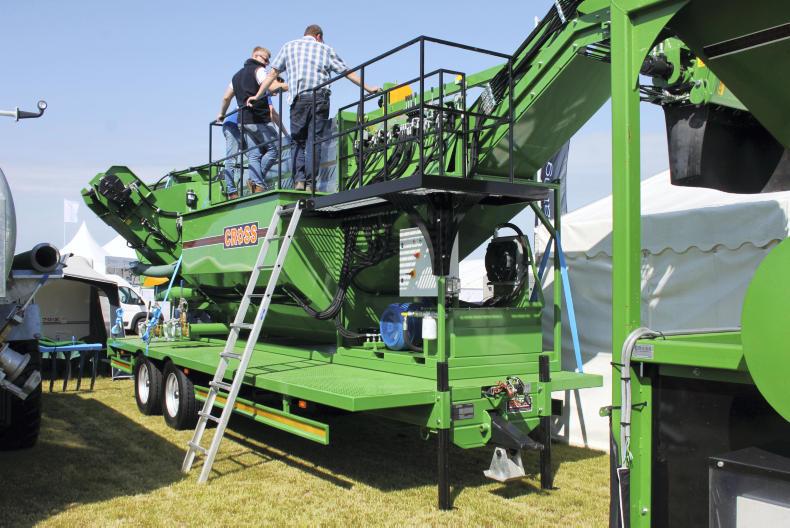

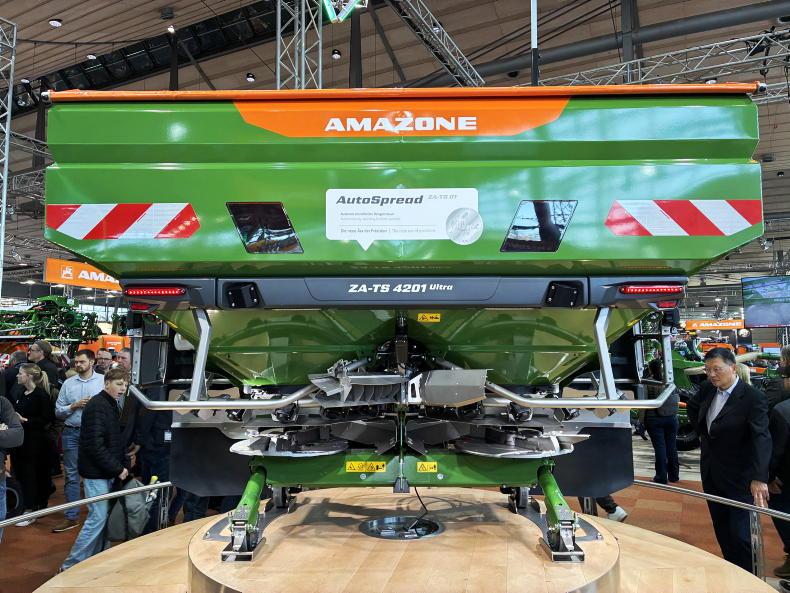

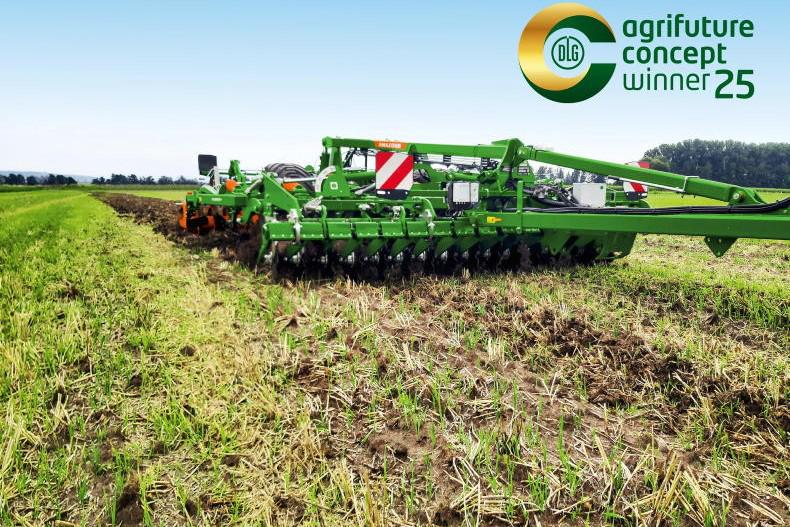


SHARING OPTIONS